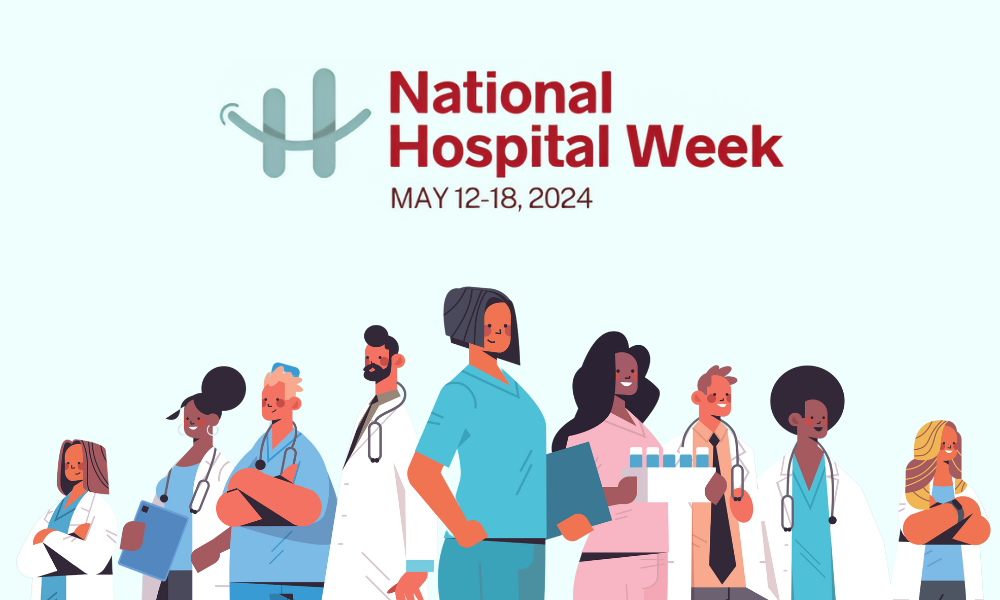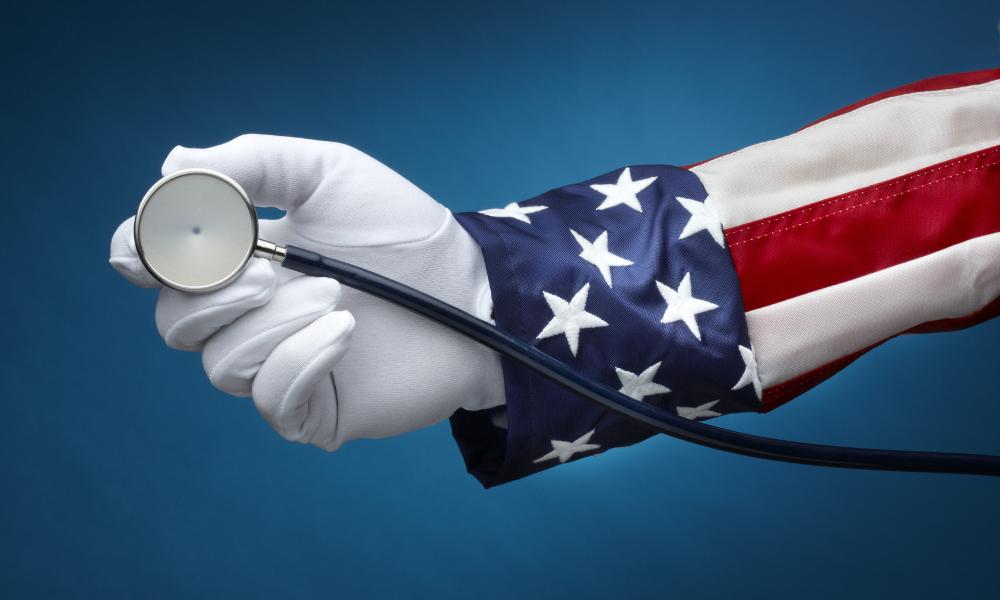“Rising to Meet the Needs of Patients” is the theme of National NP Week 2022, which runs November 13 -19. This year, governors from coast to coast are honoring nurse practitioners (NPs), recognizing them as the healthcare providers of choice for millions of Americans, according to the American Association of Nurse Practitioners® (AANP).
State Recognition
AANP reports that last year governors (and elected officials) in 48 states signed NP Week proclamations, setting a new record. “Congratulations to NPs in Alabama for submitting the first proclamation of 2022, signed by Governor Kay Ivey!” AANP said.
According to a proclamation issued by Gov. Laura Kelly of Kansas, “NPs provide high-quality primary, acute and specialty healthcare services while emphasizing health promotion, disease prevention, health education and counseling to guide patients to make smarter health and lifestyle choices every day.”Gov. Charlie Baker of Massachusetts expressed the following in his proclamation: “Massachusetts is proud to recognize and honor the countless contributions NPs have made over the past half-century and will continue to make toward the health and well-being of citizens of our state.”
Association Accolades
AANP notes that NPs provide patients of all ages with comprehensive, person-centered healthcare services more than a billion times a year. In addition to diagnosing, treating, and prescribing medications, NPs practice in nearly every healthcare setting, including hospitals, private practices, colleges and universities, public health departments, and home health locations.
“NP Week provides the opportunity to highlight the positive contributions NPs make to the health of patients nationwide,” said AANP President April Kapu, DNP, APRN, ACNP-BC, FAANP, FCCM, FAAN.
“This NP Week, AANP wishes to thank the nation’s NPs for their ongoing commitment to meeting the needs of their patients and their dedication to improving the health of their communities. NPs offer significant clinical expertise and vital solutions to the challenges facing our healthcare system and the patients we serve.”
The American Association of Nurse Practitioners® (AANP) is the largest professional membership organization for nurse practitioners (NPs) of all specialties. AANPrepresents the interests of the more than 355,000 licensed NPs in the US.
AANP provides legislative leadership at the local, state, and national levels, advancing health policy; promoting excellence in practice, education and research; and establishing standards that best serve NPs’ patients and other healthcare consumers. To locate an NP in your community, visit npfinder.com. For more information about NPs, go to aanp.org.
US News and World Report ranked the NP role first on its 2022 “Best Health Care Jobs” list.
Locum Tenens Firms Acknowledge NPs
Here are some words of wisdom from, and about, locum tenens NPs, shared from recent locum tenens agency websites.
Medicus Healthcare Solutions Celebrates Nurse Practitioner Week
(Edited from Medicus blog post)
Here are a few ideas and tips for appreciating nurse practitioners and shining a light on their many contributions this week!
Social Media #NPWeek: NPs have a passionate community of colleagues on social media. Join in on the fun: Post a thank you message or share a story! Don’t forget to tag your NP colleagues and include the #NPWeek hashtag to reach millions of people celebrating.
Say “Thank You”: Start small by simply saying,” Thank you.” Let your NPs know their work, dedication, and expertise are appreciated. A simple card with words of gratitude will go a long way. Maybe make blank cards available for staff and visitors to write notes of thanks, too!
Gift Cards: Everyone loves gift cards! Pick a popular restaurant, coffee shop, or spa. This is a thoughtful gift for any budget and will be sure to make their day.
Team SWAG: Order new NP team SWAG: Get their size and place an order for North Face full zip fleece jackets, L.L.Bean quilted sweatshirts, or Sport-Tek pullovers!
Host An Event: Organize a coffee bar with specialty drinks and treats. Arrange a potluck and invite other healthcare staff to bring in a food dish to share, go offsite for lunch or dinner, rent a couple of food trucks, or set up a mini field day with fun games and activities. Whatever event you choose, the point is to make less work for your NPs and show them how much they are appreciated.
Chair Massages: Consider organizing a visit from a licensed massage therapist. Often a company that offers this service will present different packages at different price points. The firm you select will supply the necessary equipment. After receiving a relaxing massage, your NPs will leave the massage chairs feeling refreshed.
If these previous ideas do not seem up your alley, some other ideas include providing a mobile car wash service or dry cleaning drop off and delivery.
Vista Staffing Celebrates National Nurse Practitioner Week
(Edited from Vista blog post)
National Nurse Practitioner week is celebrated annually to appreciate these exceptional healthcare providers. NP week this year is November 13-19.
The weeklong celebration consists of several events aimed at reminding lawmakers of the importance of removing outdated barriers that do not allow nurse practitioners (NPs) to practice to their fullest potential. Through this celebration, we hope to see improvements in the healthcare industry as a whole.
America has 355,000 NPs. These are highly skilled and experienced professionals who provide high-quality, patient-centered care. However, they are currently hamstrung by regulations that prevent them from using their full scope of practice. This ultimately results in poorer health outcomes for patients and higher healthcare costs.
This year’s theme, “NPs: Rising to Meet the Needs of Patients,” emphasizes how NPs are uniquely positioned to meet patient needs in today’s rapidly changing healthcare environment.
In fact, there has never been a more critical time for nurse practitioners. With an aging population and a shortage of primary care providers, NPs are often the only health care provider available to many patients.
NPs conduct more than 1 billion visits annually.
Nurse Practitioners Rise to Meet Patient Needs Every Day (Interim Physicians)
(Edited from Interim blog post)
Today, on the first day of NP Week 2022, Interim Physicians humbly thanks the 355,000 nurse practitioners practicing throughout the US – including the many hundreds of NPs we’ve had the privilege of placing in locum tenens assignments at client facilities in our four-decade history.
This year’s theme is, “NPs: Rising to Meet the Needs of Patients,” and we couldn’t agree more with that sentiment.
The Importance of Nurse Practitioners
When a patient visits a healthcare facility, they may think only a physician can provide the healthcare they need. However, in 2022 it’s increasingly likely to be seen by a nurse practitioner. In fact, NPs provide more than a billion people with patient-centered care every year.
Despite the common misperception of NPs can only work “under” doctors, NPs are fully licensed clinicians who can prescribe medication directly. Becoming an NP requires a master’s degree in nursing and successfully passing a certification exam. NPs must also meet certain requirements to periodically renew their licenses, including continuing education programs.
In recent years, the authority wielded by nurse practitioners has only grown. According to the latest stats, 42.5% of NPs hold hospital privileges, 96.2% write prescriptions, and 26 states have given them full practice authority.
Rising to Meet Patient Needs
Indeed, the numbers show NPs have been doing a phenomenal job at “rising” to the occasion for patients. Recent studies have shown NPs have been particularly important in filling the primary care gap, with up to 42.9% of primary care being provided by nurse practitioners.
Thanks to the hard work of NPs, patients have responded by rating them as the most trusted healthcare professionals for 20 straight years. Large numbers of patients say that NPs consistently spend more time with them, advocate for them, help them understand complicated medical terms, and more.
History of Nurse Practitioners
The Profession with Endless Opportunities
(MedCare Staffing)
Edited from MedCare blog post
“If Dr. Ross from the television show ‘ER’ and Nurse Jackie from the show ‘Nurse Jackie’ had a baby, it would be a nurse practitioner.” That’s what I would tell people when they asked me what ‘an NP’ was. I frequently used the opening line when I gave lectures to high school students regarding the NP role.
“A nurse practitioner is a nurse who has a master’s degree and has completed a graduate level of education at a university. All NPs are registered nurses who are licensed by the Board of Registered Nursing in the state where they may be practicing. NP’s have an expanded scope of practice over the traditional registered nurse role and their boundaries may vary from state to state.
Drs. Loretta Ford and Henry Silver created the NP role in the 1960s in Colorado due to a need to increase access to pediatric patient care. Dr. Ford believes that NPs’ providing primary care of high quality can solve the access to patient care issues in America.
Dr. Ford and her colleagues initially started as public health nurses setting up clinics at various community centers, schools, and churches in Boulder, Colorado. Like a true innovator, Dr. Ford noticed that only her colleagues and herself were taking care of public health issues in the underprivileged community setting. She realized that nurses needed to have expanded roles and specialized training to make basic decisions on their own.
The Growing Need for APRNs
(Premier Physician Staffing Services)
Edited from Premier blog post
According to the US Bureau of Labor Statistics (BLS), the job outlook for advanced practice registered nurses (APRN) is projected to grow 45% from 2019 to 2029. Find out what is driving increased demand for APRNs and where these advanced practice clinicians are most needed.
Why Is There a Growing Need for APRNs?
The United States is currently grappling with the ramifications of a large ‘senior-aged’ demographic (those individuals 65 years old and older).
According to research conducted by the Association of American Medical Colleges (AAMC), “the total U.S. population is expected to grow by 12% by 2030.” However, “the number of US residents aged 65 and older is expected to increase by 55%, and the number of people aged 75 and older will grow by 73% during the same period.”
These statistics are important for two reasons. First, a significant number of employees, including those in the medical profession, are leaving the workforce for retirement. These seasoned professionals are leaving at a faster rate than their replacements can be hired.
Second, those in the ‘senior’ demographic tend to use healthcare services at a higher rate than other demographics. In essence, it is a landscape where demand outpaces supply.
APRNs play a critical role in addressing these concerns, according to the National Center for Biotechnology Information: “The Institute of Medicine, for example, claims that a large body of evidence ‘does not support the conclusion that APRNs are less able than physicians to provide safe, effective and efficient care’ ”
In other words, APRNs expand access to quality healthcare.
Furthermore, while doctors must complete 12+ years of education and training before they can practice medicine, APRNs can begin treating patients after six to eight years of education and training.
Where Are APRNs Needed Most?
While there is a need for more APRNs in all practice settings, the following four specialties are experiencing an exceptionally high demand:
- Family Nurse Practitioners:
- The AAMC predicts that by 2033, there will be a shortage of 21,400 to 55,200 primary care physicians in the US. Since PCPs are the first point of contact with the healthcare system for many patients, this shortage could result in an increase in chronic health conditions, premature deaths, and healthcare costs.
- Family nurse practitioners (FNP) bring similar clinical expertise as PCPs in diagnosing and treating health conditions. In fact, the AANP reports that more than 870 million visits are made to US nurse practitioners annually. These patients report high satisfaction with the care they receive, minimizing the gap between the supply and demand for primary healthcare services.
- Adult-Gerontology Nurse Practitioners:
- While there are more than 290,000 licensed nurse practitioners in the US, only 22,620 (roughly 8%) work as adult-gerontology nurse practitioners (AGNP), according to the AANP. Given the fact that 74% of the nation’s population is 18 years or older, (and 12% is 65 or older), there is a tremendous opportunity for growth within this specialty, according to Infoplease.
- Psychiatric Mental Health Nurse Practitioners:
- A national workforce assessment from the American Psychiatric Nurses Association (APNA) reports that “approximately 56 million American adults are struggling with a mental illness or substance use disorder.” The assessment goes on to say that despite the best efforts of the current mental health workforce, the overwhelming demand has created a situation where many patients fail to receive the treatment they need.
- Psychiatric mental health nurse practitioners (PMHNP) are desperately needed to fill the provider gaps within the mental health field. As a PMHNP, clinicians can prescribe medication and practice psychotherapy in a variety of settings, including private practices and hospitals.
- Certified Registered Nurse Anesthetists (CRNAs):
- CRNAs administer more than 50 million anesthetics to patients each year in this country. Furthermore, CRNAs represent more than 80% of the anesthesia providers in rural counties, according to the American Association of Nurse Anesthetists. In essence, CRNAs play a major role in providing safe and effective anesthesia to traditionally underserved populations.
- According to the US Bureau of Labor Statistics, there are roughly 43,520 CRNAs working in the US. With fewer anesthesiologists graduating from medical school each year, there is a growing demand for CRNAs in every practice setting.








